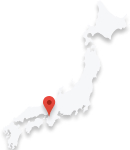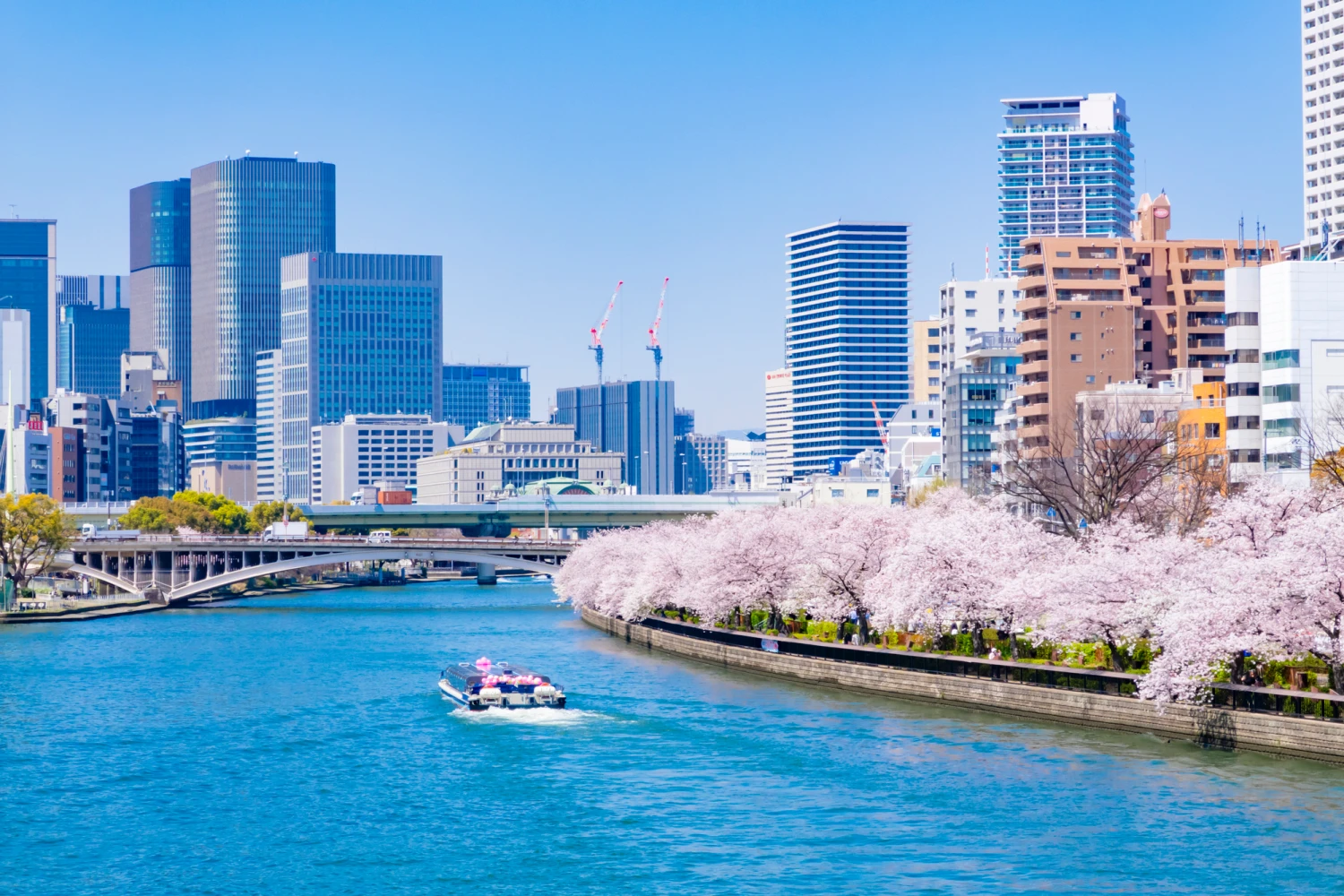.webp)

The best Onsen in Osaka 2024
Osaka Prefecture is located in the Kansai region of the Japanese archipelago and is one of the central cities in western Japan.
The city center is lined with buildings and commercial facilities, and the transportation network is very well developed. Although Osaka is recognized as a modern city, it retains much of the history that Japan once had and is rich in temples, shrines, and buildings.
Osaka Prefecture is characterized by the coexistence of modern cityscape and history, but it also has a rich natural environment.
The topography of the prefecture includes "Osaka Bay," which flourished as a key shipping route, and the inland areas are surrounded by mountains. The climate is relatively mild and temperate with little rainfall.

In addition, Osaka Prefecture has attracted specialty products from all over the country, and trade has flourished. The food culture has also developed so much that it has come to be known as "the kitchen of the nation. Takoyaki" and "Okonomiyaki" are especially popular, and can be said to be gourmet foods that you should try at least once when you visit Osaka.
Osaka also has many other attractions such as traditional arts and crafts.
Entertainment such as "Kamigata Kabuki," which developed mainly in Osaka and Kyoto, and "Manzai," in which people enjoy conversational dialogue, are part of the culture that Japanese people are familiar with.
.webp)
Osaka Prefecture has thus developed a variety of cultures, including food and entertainment, but Onsens and public bathhouses have also coexisted with the people of Osaka since ancient times and are well known to them.
Osaka was a bustling commercial center, and many workers and merchants visited public bathhouses and onsen to relieve their physical fatigue. Since there are few natural Onsen in Osaka, public bathhouses have been actively developed.
In recent years, however, Onsen-type theme parks and Onsens with innovative concepts have sprung up one after another. (It is also very attractive to enjoy historical Onsen along with new ones, such as Nagano Onsen, which is said to have gushed out in 592-628.
Once you step into Osaka Prefecture, you will enjoy a fresh travel experience from food, culture, rich nature to Onsen.
.webp)
Get to know Osaka
Access
Osaka Prefecture, one of the leading cities in western Japan, has a very well-developed transportation network and is characterized by smooth access from all cities.
Osaka International Airport (Itami Airport) and nearby Kansai International Airport are the main destinations for long-distance travel within Japan. In addition to air travel, the Shinkansen bullet train provides convenient and easy access to major cities such as Tokyo and Nagoya.
Travel from Tokyo to Osaka Prefecture takes about 1 hour by air. Travel time is also relatively short, about 2 hours and 30 minutes by Shinkansen.
Trains, buses, and cabs are convenient ways to get around Osaka Prefecture, and the transportation network is very well developed, making it easy to get to any destination.
.webp)
From Tokyo
<Airplane> Haneda Airport→Osaka International Airport (about 1 hour and 5 minutes)
<Shinkansen> Tokyo Station → Shin-Osaka Station (about 2 hours and 30 minutes)
From Nagoya
<Shinkansen> Nagoya Station → Shin-Osaka Station (approx. 50 min.)
From Sendai
<Airplane> Sendai Airport→Osaka International Airport (about 1 hour and 20 minutes)
<Shinkansen> Sendai Station→Tokyo Station→Shin-Osaka Station (about 4 hours and 20 minutes)
History
.webp)
Osaka Prefecture is a land that has played an important role in the history of Japan.
The earliest known history is that humans lived in Osaka over 10,000 years ago, and the area developed over time.
From the 5th to 7th centuries, Osaka was the center of politics and culture, and commerce flourished. Although the capital has since moved to present-day Nara and Kyoto prefectures, Osaka continues to develop to this day.
.webp)
In the late 1500s, Osaka Castle was built by Toyotomi Hideyoshi, a famous warlord of the Warring States period. Osaka Castle is widely known as one of the most famous castles in Japan for its massive appearance and beautiful, delicate decoration.
Even today, Osaka Castle remains a popular symbol of Osaka Prefecture and is one of the most visited tourist spots throughout the year. Osaka Prefecture is also dotted with a variety of other historic spots, such as the Tomb of Emperor Nintoku, the largest forward-rear round burial mound in Japan, and the former Sugiyama family residence, which is designated as an important cultural property and a valuable old machiya (townhouse) that can be visited.
.webp)
Along with the history of Osaka Prefecture, the culture of public baths and Onsens has been a familiar one.
Sento (public bathhouses) are said to have started in the Heian period (794-1192) under the name of "yuya (bathhouse)," and in the Edo period (1603-1868), they became a popular facility for the general public. At its peak in the 1960s, Osaka Prefecture had as many as 2,400 sento (public bathhouses), and they were part of the commercial support system.
Today, the number of public bathhouses has dwindled to the low 300s, but the traditions have been preserved, and a wide variety of facilities are still available to relieve people's fatigue.
On the other hand, the Onsen in Osaka Prefecture are non-volcanic, and the amount of hot water is small, so there are not as many as there are nationwide. However, in recent years, improved drilling techniques have made it relatively easy to reach the source, and since the beginning of the 2000s, the number of natural Onsen has been gradually increasing.
Thus, Osaka Prefecture is an attractive spot for sightseeing and enjoying Onsen while tracing the history of Japan.
Onsen areas
Inunakiyama Onsen
.webp)
Inunakiyama Onsen is an Onsen resort located in Izumisano City, Osaka Prefecture.
It has one of the longest histories of any Onsen resort in Osaka Prefecture, and legend has it that during the period of the Northern and Southern Dynasties (1336-1392), soldiers who had been wounded in battle used to heal their bodies.
Surrounded by rich nature, the area is lined with inns along the river. The area is characterized by the fact that it is only about an hour from Osaka City, making it easy to enjoy this secluded Onsen.
Inunakiyama Onsen is a bicarbonate spring with a wide range of major benefits, including neuralgia, rheumatism, cuts, and sensitivity to cold.
Why not spend a moment of healing in this tranquil, secluded Onsen, which is easily accessible from the city center of Osaka?
Ushitaki Onsen
.webp)
Ushitaki Onsen is an Onsen resort located in Kishiwada City, Osaka Prefecture.
The area surrounding the Onsen is surrounded by rich nature, and Ushitaki Mountain is famous for its autumn leaves. The contrast between the autumn leaves and "Daiitokuji Temple," which is designated as a national important cultural property, is extremely beautiful and attracts visitors.
Ushitaki Onsen, which can be enjoyed together with this wonderful nature, is an Onsen that gushes forth from a geological formation that is more than 70 million years old. The spring water, which boils 1645 meters underground, is a bicarbonate spring water with a silky texture that is good for beautiful skin.
It is effective for a wide range of ailments, including neuralgia, joint pain, muscular pain, and rheumatism.
At Ushitaki Onsen, visitors can spend a relaxing time in the great outdoors with Onsen water gushing from ancient strata.
Fushio Onsen
.webp)
Fushio Onsen is an Onsen located in Ikeda City, Osaka Prefecture.
The town of Fushio, where Fushio Onsen is located, is about 30 minutes from Osaka City, making it easily accessible. The atmosphere of Fushio-cho is very peaceful and relaxing.
The spring is a precious natural radium spring and is expected to be effective for various conditions such as neuralgia, rheumatism, skin diseases, and high blood pressure.
The temperature of the spring is slightly low, so you can take a long, leisurely bath and feel refreshed afterward.
The onsen is also a convenient base for sightseeing, as it is easily accessible to Osaka City, Kyoto Prefecture, and Hyogo Prefecture.
Search by Prefecture
Search by Onsen area
- Hokkaido
- Nagano
- Akita
- Kanagawa
- Yamagata
- Shizuoka
- Gifu
- Hyogo
- Wakayama
- Yamanashi
- Kumamoto
- Oita
- Fukushima
- Tochigi
- Gunma
- Ishikawa
- Shimane
- Ehime
- Saga
- Kagoshima
